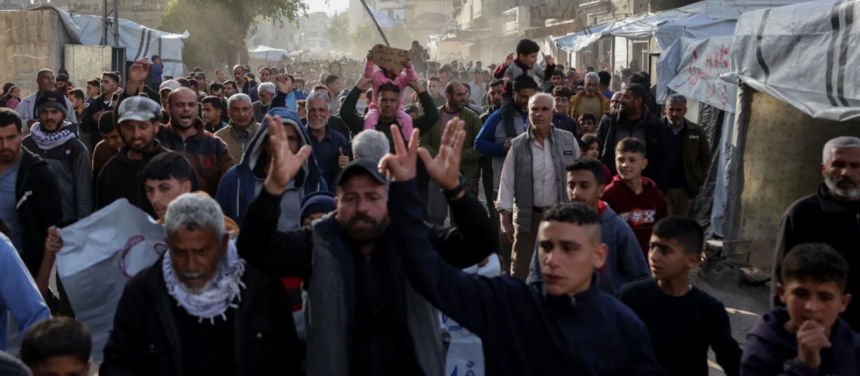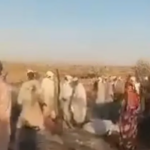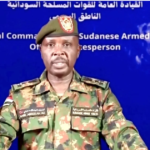Gaza City, Gaza Strip – Thousands of Palestinians took to the streets in several locations across the Gaza Strip on Thursday in what is being described as the largest anti-Hamas demonstrations since the start of the ongoing war with Israel. Protesters voiced frustration with the dire humanitarian situation, the perceived inaction of Hamas in securing aid, and the overall devastation wrought by the conflict.
Witnesses reported large crowds gathering in areas including Deir al-Balah, Khan Younis, and Jabalia refugee camp, chanting slogans against Hamas and demanding an immediate ceasefire to the fighting. Placards were seen criticizing the group for prioritizing its own survival over the needs of the Gazan population.
“We are starving! Where is the aid? Where is Hamas?” shouted one protester in Deir al-Balah, according to a local journalist present at the scene. “We have lost everything, our homes, our families, and Hamas sits in their tunnels doing nothing!”
The demonstrations come amidst a rapidly deteriorating humanitarian crisis in Gaza. International organizations have warned of widespread famine and disease outbreak due to severe shortages of food, water, and medical supplies. Access to aid remains a critical challenge exacerbated by ongoing fighting and logistical hurdles.
While Hamas has traditionally enjoyed significant support within the Gaza Strip, these protests suggest a growing discontent fueled by the unprecedented scale of devastation and suffering caused by the current conflict. The group has yet to officially comment on the demonstrations, but sources close to Hamas suggest they are closely monitoring the situation.
“These protests reflect the desperation and anger that is building up within the Gazan population,” said Dr. Khalil Shikaki, a political scientist specializing in Palestinian public opinion at the Palestinian Center for Policy and Survey Research. “The intensity and scale of these demonstrations are unprecedented during this war. It remains to be seen what impact they will have on Hamas’s long-term legitimacy and control.”
The protests are particularly significant given the risks involved in publicly criticizing Hamas within the Gaza Strip. The group has historically maintained a tight grip on power and suppressed dissent.
The future of these demonstrations and their potential impact on the political landscape in Gaza remain uncertain. However, they highlight the growing desperation and frustration among Palestinians trapped in the conflict and raise questions about the long-term stability of Hamas’s rule in the enclave. The international community is watching closely, hoping for a swift de-escalation of the conflict and a sustainable solution to the humanitarian crisis plaguing Gaza.









